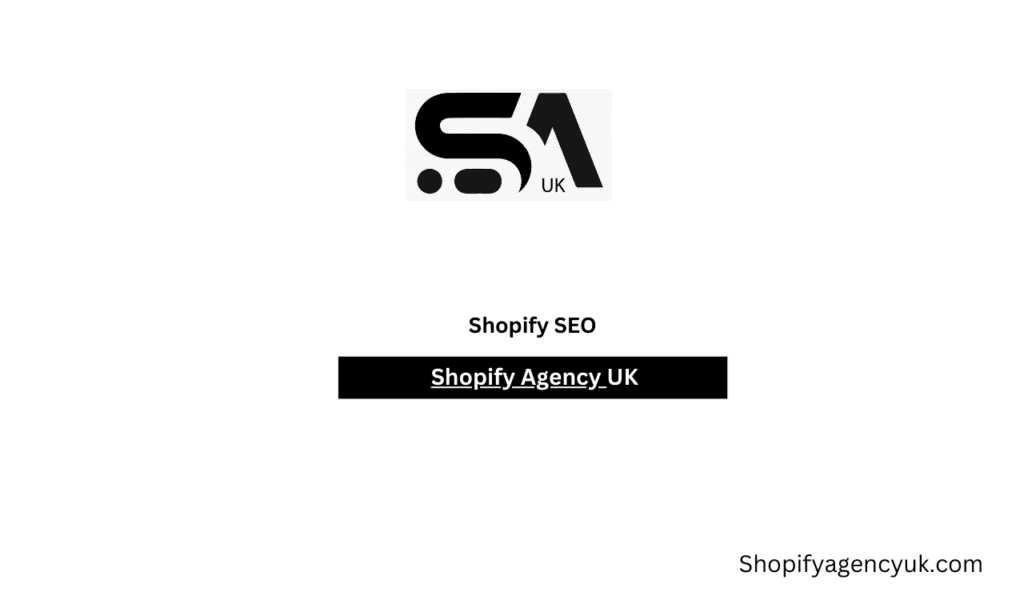I’ve recently come to realize that in the world of e-commerce today which is very competitive, a stunning Shopify store is not enough like Shopify Agency in UK. One must make some extra effort so that our site is among the first when someone looks up in the search engines. Here comes the idea of SEO.
It is the missing link that can be utilized to get more backlinks, bring traffic, and effectively reach our online customers. Yet even with all of these features chiefly utilizing it to your advantage inactive mode and hence your online platform might be invisible to users. Consequently, knowing all SEO updates is the point we start from.
What is Shopify SEO?
Shopify SEO is the term used for conducting SEO activities in Shopify stores so that they appear high in search engine results pages (SERPs). Every website, especially for Shopify, must have some SEO strategies which include keyword optimization, high-quality content, technical SEO, and doing links in the right way. The mere use of SEO tools that on-point content is enough to tell search engines that our web pages are among the ones customers are looking for.
In the matter of SEO you make a decision whether you are just beginning a Shopify store or expanding its abilities. If you want to make it big in the long run with your website, this may include the hard work of SEO to put your site out in some search engines. The online stores that are higher in the search engine list are favored by most consumers thus have a higher click-through rate and thus more sales will likely be the outcome of the clicks.
Why Shopify SEO Matters for Your Online Store

It is a well-accepted fact that people get to know new products through the gateways of Search Engines. If we perfectly do SEO, our store will stand in the front of prospective buyers. And let us discuss why SEO is so crucial:
- More Visibility: It has been widely noted that those websites pages that are shown at the top of search engines get the lion’s share of the traffic. Stores that are crafted for specific search terms will receive higher Google rankings compared to the stores that are not.
- Organic Traffic: Search engine optimization (SEO) offers a major benefit in the form of free traffic compared to PPC. As we contribute more to SEO, we are ensuring our website to be found by organic visitors as a long-lasting source of this kind of traffic.
- User Experience Improving: SEO does not; only assist search engines to find the content of our website but also can create a seamless and immersive experience for our users. Google’s algorithm updates now give priority to sites that are both mobile-friendly and fast-loading and have clear navigations.
- Low Costs: If we only talk about the amounts we have to pay for paying ads then we see a great advantage of SEO. With low ongoing costs and sustainable results, it is indeed the best investment in our online store.
Shopify SEO Best Practices
What makes a good SEO is the adequacy of the mixture of on-page and off-page SEO. Our discussion now is about the very best techniques to nail successful SEO.
1. Conduct Keyword Research for Your Shopify Store
The crucial parts of SEO are always the keywords. We, therefore, direct our attention to Shopify where we have to generate the most suitable and long-tail keywords. These tools can provide us with the right keywords Google Keyword Planner, Ahrefs, and SEMrush.
- Create Long-Tail Keywords: A good example that expresses this situation is the word pair “shoes” which we found out that people are not searching for enough while if we replace it with “women’s running shoes for flat feet” the number of the search will be bigger.
- Examine the Competitor Keywords: We review our competitors and their keywords to integrate all insights into our own SEO efforts.
2. Optimize Product Pages with Shopify SEO
The product pages are the backbone of our store. Proper optimization of product pages is the instrument for their plucking up in Google.
- Title Tags: We secure mobile devices and screen time by making the page-short and conveying the primary keyword
- Meta Descriptions: We write highly conversion optimizing meta descriptions including our focus keywords, to get more clicks, however, the most up to date keyword will be inside.
- Product Descriptions: We develop engaging and unique content. We remove duplicate content as it is banned by Google if the site is involved.
- Image Alt Text: We always avail of the opportunity to restrict keywords properly so that it gives a better position of my products and helps to discover the input form file which can be given by providing the general alternatives automatically. In this manner, an input form will pop up that will show up allowing you to select a file.
3. Improve Site Structure and Navigation
A clear structure helps search engines crawl our website and users find what they need in a preferable way.
- Use Categories and Tags: One can show them in a more graphical way, and make it more interesting to people by organizing the goods into various categories and subcategories. This way, our products’ SEO is greatly enhanced and at the same time, our customers have an optimistic experience.
- Internal Linking: We use internal linking to other products or pages that are related. By doing this we can, of course, direct some of the links from one page to another and get the customers of the store to tour around the different of the store.
- XML Sitemap: We submit an XML sitemap to Google Search Console to help search engines crawl our website efficiently.
4. Speed Up Your Shopify Store
Both SEO and user experience are closely connected with the page. Site speed is a huge factor in whether a client will stay or leave; a page slow to load will be the result and that negatively affects our rankings.
- Compress Images: Large images are often slow to load. We can reduce their size and maintain the quality of the pictures by using a tool like TinyPNG.
- Minimize Apps: Even though Shopify apps are helpful, they can frequently slow down the store. We simply get rid of those we no longer need.
- Use a Fast Theme: We do not plan to sacrifice our user experience in the face of information need so we have sought out faster, better order-responsive themes that fit the specified conditions.
5. Focus on Mobile SEO

The most important thing is to optimize your Shopify store for mobile devices because it is the most used medium in the e-commerce industry. There is also a need for your site to be easy to use that can be adapted to various screen sizes. Responsive apps, when they are present on the site, give a great end-user experience and the main search result.
- Responsive Design: We drag forth the design of changes when we have got feedbacks. For responsive web design, this feedback is obtained in many different ways. Some examples are using the viewport tag, providing media queries, and using the grid system.
- Mobile Page Speed: We use Google’s Mobile-Friendly Test and Page Sped Insights to check our site’s mobile performance and to make improvements where they are necessity.
6. Build High-Quality Backlinks
Backlinks are an important part of the off-page SEO strategy. As one of the ways of doing off-page SEO, we continue to link reputable sites to our Shopify store so that through them the search engines can learn the website’s trustworthiness.
- Reach Out to Influencers: We develop relationships with bloggers and social media influencers within the same niche for us to acquire links from them.
- Guest Blogging: We create a highly valuable e-copy that is then presented on other sites, thus we have been backlinked to our store in return.
7. Utilize Blogging for Shopify SEO
Content advertising plays the most critical role when it comes to generating the facts that favor organic traffic. Some of the content is made for instance in the format of blog posting while it intends to enlarge the variety of issues we are able to cope with to our customers.
- Create Helpful Guides: We do blog posts about what clients ask a lot or how to help them with examples of our products.
- Optimize Blog Posts: We apply the best practices for SEO when creating our blogs. Those that consist of keyword placement, internal links, and headings that are clear are among them.
Tracking and Analyzing Your Shopify SEO Performance
After going through the different SEO tactics we have sketched, the next step is measuring the outcome. For instance, we can use Google Analytics and Google Search Console to get all the search engine results of our store.
- Monitor Organic Traffic: We continually monitor our organic traffic data to clock better performers.
- Track Keyword Rankings: We depend on tools along the lines of Ahrefs or Moz and review how the keyword positions develop and move to appropriate measures when needed.
Common Shopify SEO Mistakes to Avoid
Despite the complexity of the technical part of SEO, there are a few errors that are common. When engaged in these mistakes it becomes difficult to make headway or to see your dreams fulfilled. We avoid all the following traps:
- Duplicate Content: No stealing here, even if it’s from another web-site. By doing so we avoid Google penalties for duplicate content. The first thing we have to learn is that it is highly unlikely to threaten or compete with something illegal or unprofessional by doing so will not be copied.
- Neglecting Meta Tags: We always optimize titles and descriptions. They affect the number of pages you appear in the search results, which could lead to a higher click-through rate.
- Ignoring Mobile Optimization: Mobile is the main showplace for visitors here. In other words. It includes regularity of acutiing nother person as a consecutivity of illegalized green-guy because you dont respect his schedule and thereby deport some targets from the ring.
FAQs
How long does it take to see results from Shopify SEO?
SEO is a long-term marketing strategy that provides results after some time. It might take anywhere between 3 to 6 months, however, it can also be as long as one year, depending on the niche’s competition.
Can I use Shopify SEO apps to improve my rankings?
Yes, there are SEO apps in the Shopify App Store that can help us have a good ranking. Among the most used, we can mention SEO Manager and Plug in SEO.
What is the role of schema markup in Shopify SEO?
Schema markup is a way through which we, humans, can assist machines like search engines to better understand the content on our sites for example]. [It really helps to place rich snippets in the search results so they can give the best performance.
Should I use Shopify’s built-in SEO features?
Definitely. You must take advantage of the various tools provided by Shopify Agency if you want to excel in SEO. For example, by enabling sitemaps and meta description, your rankings will improve, too.
How important is blogging for Shopify SEO?
Content marketing plays an important role in generating organic traffic, for which, according to the context, blogging acts as a focal point. The idea is that by blogging consistently and positively informing users of the facts there will be a change among people on the subject.
Can I optimize a Shopify store for local SEO?
Yes, you can improve a Shopify store for local SEO when you use proper local keywords, provide location-based content, and create a Google My Business account.
